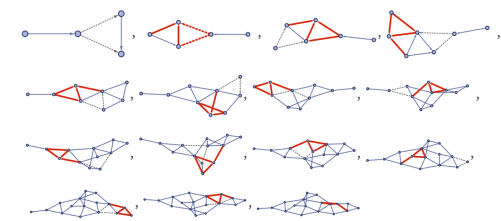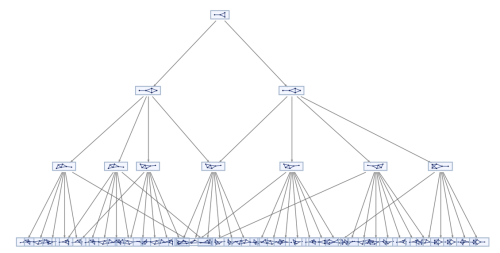Fundamental Physics
Space & Time
Time as a Computational Process
In traditional physics, time is thought of as a coordinate similar to how we refer to a location in physical space. In the Wolfram Physics Project, time is thought of as the progressive application of computational rules, with each state of the system computed from the last. The implication of this new perspective is that time can no longer be set arbitrarily, as it is done often in traditional mathematical physics .[1] The reason for this is due to the phenomenon of Computational Irreducibility, which means that all prior states of the system must be computed if we want to learn about a system at a given time[2].
The Observer
By thinking of time as the progressive application of rules, this implies that it is theoretically possible for one to know all the possible states of a system. Stephen Wolfram's work in Observer Theory shows that the reason we do not experience such a phenomenon is because we are Computationally Bounded Observers. For us to be able to know the future would be to compute a computationally irreducible amount of work.
Space
In the Wolfram Model of physics, space consists of discrete, abstract relations between abstract points. [3]
-
A diagram showing the rule {{x, y, z}, {u, y, v}} → {{w, z, x}, {z, w, u}, {x, y, w}}
-
The state of the hypergraph after each application of the rule
-
The final state of the hypergraph after applying the rule many times

Multiway Systems
A rule may have multiple possible ways of applying it. For example, the rule {{x, y}, {x, z}} → {{x, z}, {x, w}, {y, w}, {z, w}} defines how to take take two connections in the hypergraph and transform them into four new connections. The rule just says to find two adjacent connections, and if there are several possible choices, it says nothing about which one. A crucial idea in the Wolfram Physics Project is in a sense just to do all of them.[3]
All possible paths a system can take is represented by the Multiway Graph[3]

References
- ↑ Wolfram, Stephen (October 8, 2024). "On the Nature of Time".
- ↑ Wolfram, Stephen (2002). A New Kind of Science. Wolfram Media. p. 237. ISBN 1-57955-008-8.
- ↑ 3.0 3.1 3.2 Wolfram, Stephen (14 April 2020). "Finally We May Have a Path to the Fundamental Theory of Physics… and It's Beautiful". Stephen Wolfram Writings.


